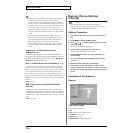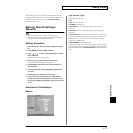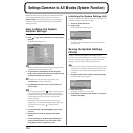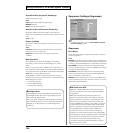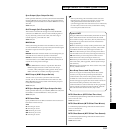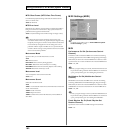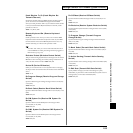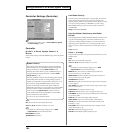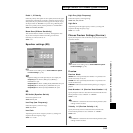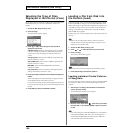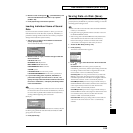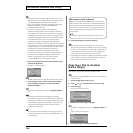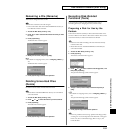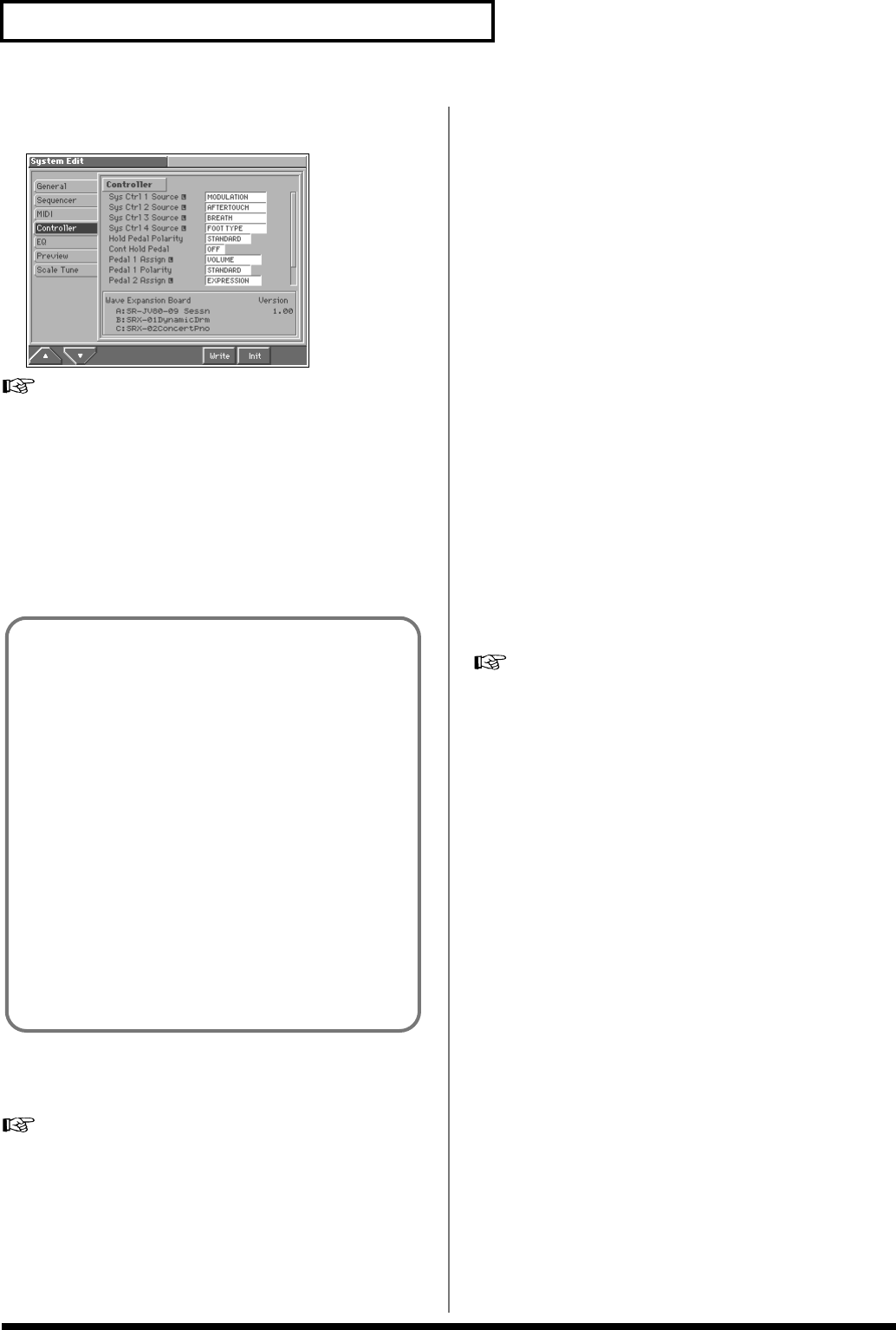
184
Settings Common to All Modes (System Function)
Controller Settings (Controller)
fig.15-06_50
For details on the setting, refer to “How to Make the System
Function Settings” (p. 178).
Controller
Sys Ctrl 1–4 Source (System Control 1–4
Source)
System Control Assign selects the MIDI message used as the System
Control.
Value
OFF: The system control knob will not be used.
CC01–31, 33–95: Controller numbers 1–31, 33–95
For details on control change messages, refer to “MIDI
Implementation” (Sound/Parameter List).
PITCH BEND: Pitch Bend
AFTERTOUCH: Aftertouch
Hold Pedal Polarity
Select the polarity of the Hold pedal. On some pedals, the electrical
signal output by the pedal when it is pressed or released is the
opposite of other pedals. If your pedal has an effect opposite of what
you expect, set this parameter to “REVERSE.” If you are using a
Roland pedal (that has no polarity switch), set this parameter to
“STANDARD.”
Range: STANDARD, REVERSE
Cont Hold Pedal (Continuous Hold Pedal
Switch)
This setting determines whether the HOLD PEDAL jack will provide
support for half-pedaling (ON), or not (OFF). When this is set to
support use of half-pedaling techniques, you can then connect an
optional expression pedal (EV-5, etc.), and employ pedal work to
achieve even finer control in performances in which piano tones are
used.
Value: OFF, ON
Pedal 1, 2 Assign
This specifies the function of each pedal connected to the CTL 1, CTL
2 PEDAL jacks.
Value
OFF: The control pedal will not be used.
CC01–31, 33–95: Controller numbers 1–31, 33–95
For details on control change messages, refer to “MIDI
Implementation” (Sound/Parameter List).
BEND UP: The pitch will rise in semitone steps (maximum 4
octaves) each time you press the pedal.
BEND DOWN: The pitch will fall in semitone steps (maximum 4
octaves) each time you press the pedal.
AFTERTOUCH: Aftertouch
OCT UP: Each pedal press raises the key range in octave steps (up to
3 octaves higher).
OCT DOWN: Each pedal press lowers the key range in octave steps
(up to 3 octaves lower).
START/STOP: The sequencer will start/stop.
PUNCH I/O: Manual punch-in/out recording will start/stop.
TAP TEMPO: Tap tempo (a tempo specified by the interval at which
you press the pedal).
PROG UP: The next sound number will be selected.
PROG DOWN: The previous sound number will be selected.
FAV UP: The favorite sound of the next number or bank will be
selected ([1] → [8]).
FAV DOWN: The favorite sound of the previous number or bank
will be selected ([8] → [1]).
ARP SW: Switches the Arpeggiator on/off.
PTN SW: Switch Rhythm pattern playback on/off.
System Control
This function, which departs from previously used methods,
and instead allows you to use MIDI messages to change tone
settings in realtime, is called the Matrix Control (p. 54).
Similarly, the function allowing you to use MIDI messages to
change multi-effects settings in realtime is called the Multi-
effects Control (p. 175).
Normally, the Matrix Control is used for making patch settings,
and the Multi-effects Control for making settings to patches,
rhythm sets, multitimbres, and performances. However, if you
do not need to change the MIDI messages used for matrix
control or multi-effects control by each patch/rhythm set/
multitimbre/performance, or if you want to use a specific MIDI
message for matrix control or multi-effects control, you will
want to make use of System Control. In other words, you
could call the System Controls global Matrix Control/Multi-
effects Control for the entire Fantom.
You can use up to four System Controls.



